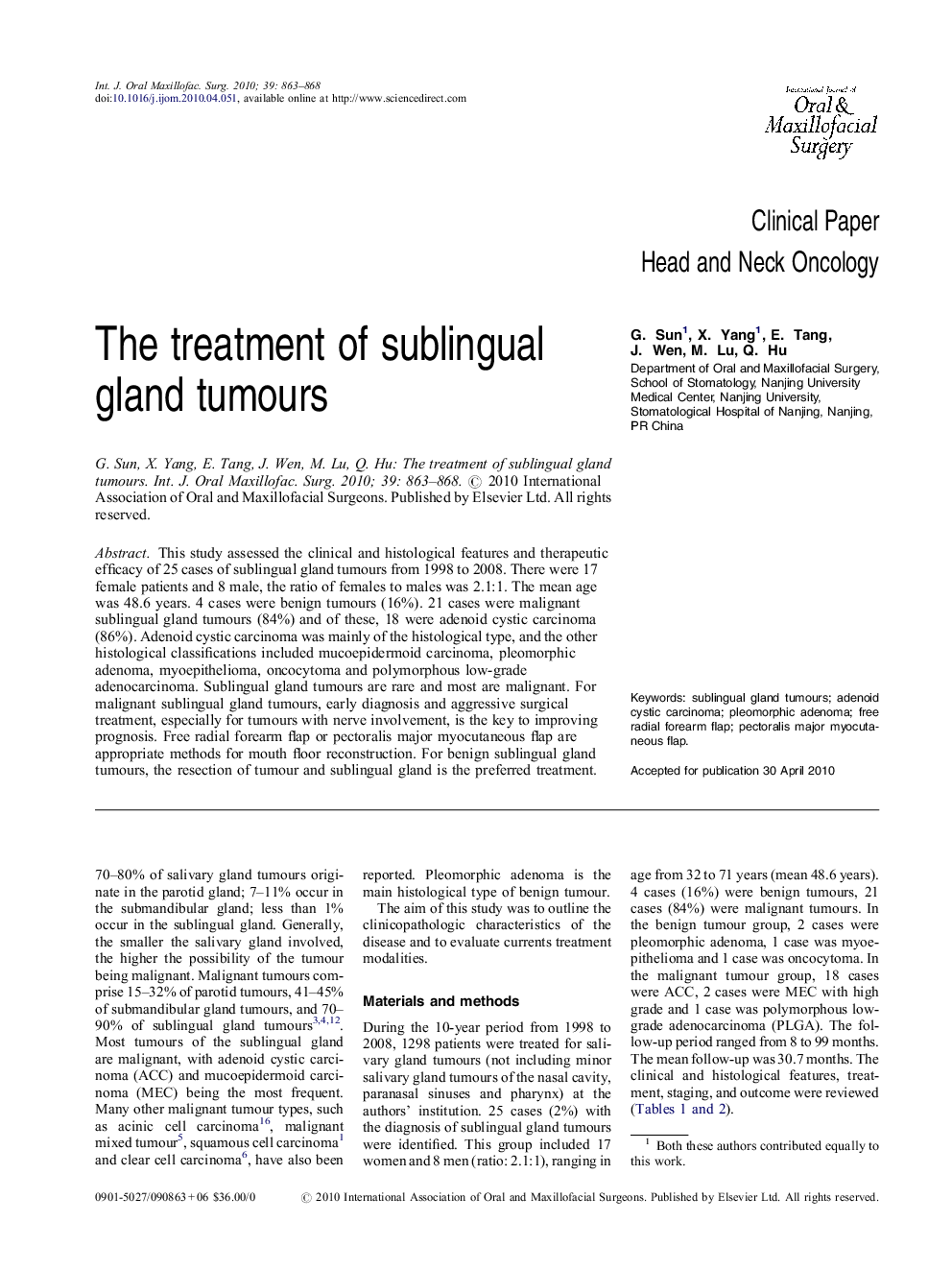| Article ID | Journal | Published Year | Pages | File Type |
|---|---|---|---|---|
| 3133989 | International Journal of Oral and Maxillofacial Surgery | 2010 | 6 Pages |
Abstract
This study assessed the clinical and histological features and therapeutic efficacy of 25 cases of sublingual gland tumours from 1998 to 2008. There were 17 female patients and 8 male, the ratio of females to males was 2.1:1. The mean age was 48.6 years. 4 cases were benign tumours (16%). 21 cases were malignant sublingual gland tumours (84%) and of these, 18 were adenoid cystic carcinoma (86%). Adenoid cystic carcinoma was mainly of the histological type, and the other histological classifications included mucoepidermoid carcinoma, pleomorphic adenoma, myoepithelioma, oncocytoma and polymorphous low-grade adenocarcinoma. Sublingual gland tumours are rare and most are malignant. For malignant sublingual gland tumours, early diagnosis and aggressive surgical treatment, especially for tumours with nerve involvement, is the key to improving prognosis. Free radial forearm flap or pectoralis major myocutaneous flap are appropriate methods for mouth floor reconstruction. For benign sublingual gland tumours, the resection of tumour and sublingual gland is the preferred treatment.
Keywords
Related Topics
Health Sciences
Medicine and Dentistry
Dentistry, Oral Surgery and Medicine
Authors
G. Sun, X. Yang, E. Tang, J. Wen, M. Lu, Q. Hu,
